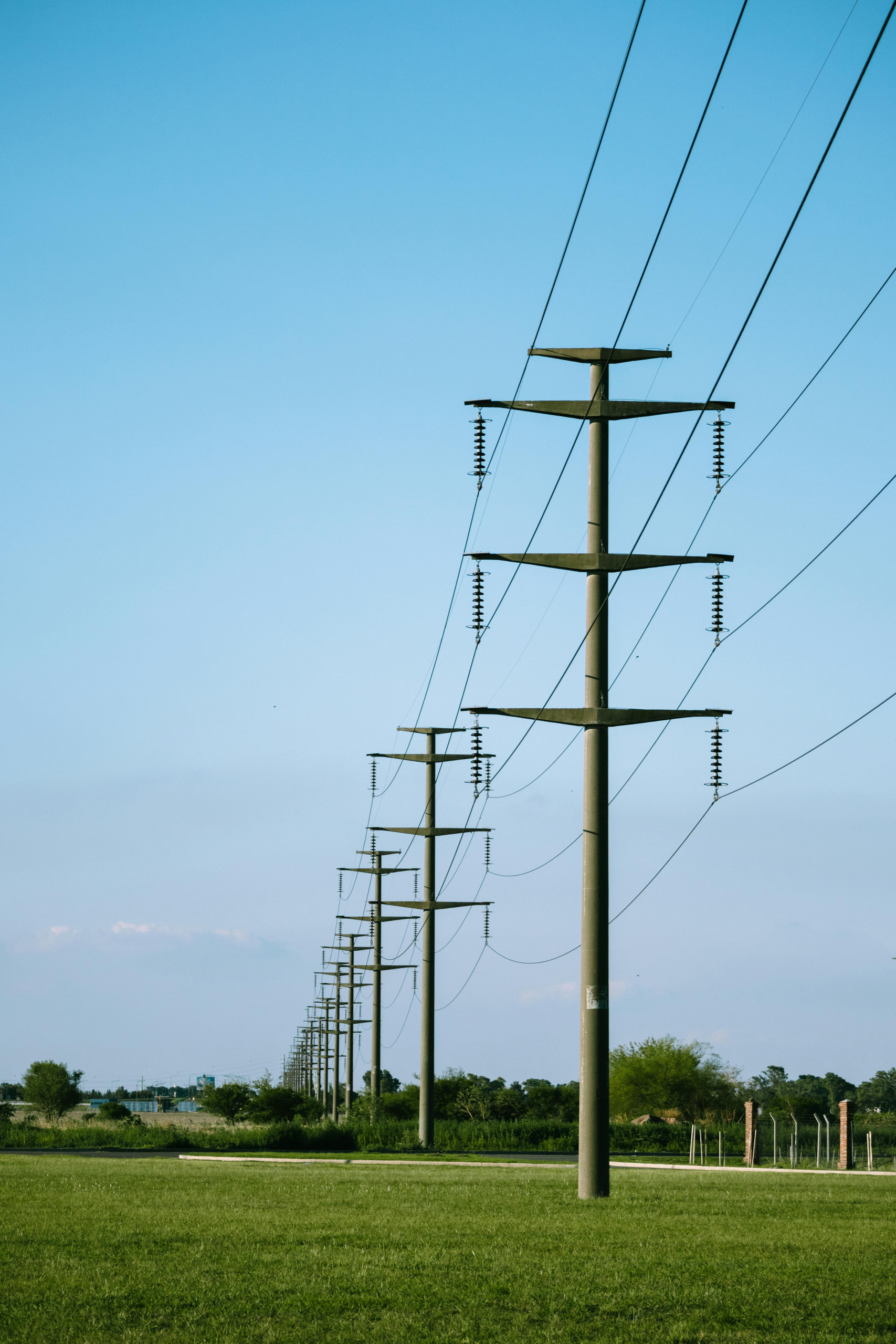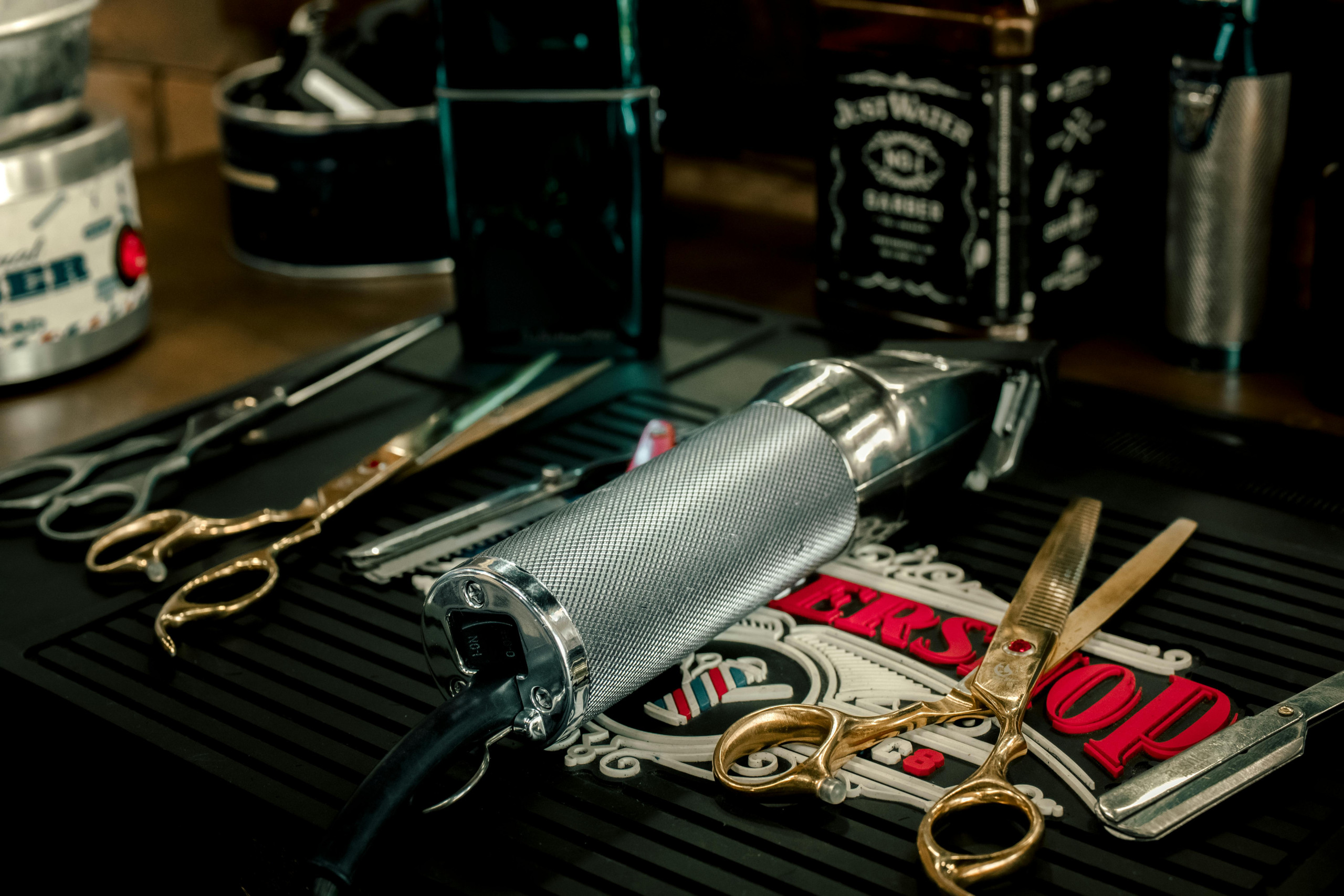Imagine a world where industrial manufacturing processes run smoother, faster, and more efficiently. Well, that world is becoming a reality with the integration of electric die grinders. These powerful tools are revolutionizing the way industrial manufacturers approach various tasks, from cutting and shaping to polishing and grinding. With their precision, versatility, and easy handling, electric die grinders are quickly becoming a staple in the industry, enhancing productivity and ensuring exceptional quality. In this article, we will explore the benefits and applications of integrating electric die grinders into industrial manufacturing processes, and discover how they are reshaping the future of manufacturing.
Benefits of Electric Die Grinders
Increased Efficiency
When it comes to industrial manufacturing, efficiency is key. Electric die grinders offer a significant advantage in this aspect. With their high RPM (revolutions per minute) and powerful motors, these tools can quickly and effortlessly remove material, saving you valuable time in the process. Whether you need to smooth out rough edges, shape materials, or perform intricate detailing, electric die grinders can get the job done efficiently.
Cost Savings
In addition to increased efficiency, electric die grinders can also lead to significant cost savings for your manufacturing processes. These tools are known for their durability and longevity, meaning you won’t have to constantly replace them as you might with lower quality options. This ensures that you are getting the most out of your investment and minimizing the need for frequent tool replacements. Moreover, the reduced labor time required for tasks performed with electric die grinders can also result in cost savings in the long run.
Versatility
One of the most notable benefits of electric die grinders is their versatility. These tools are capable of handling a wide range of tasks in various industries, making them a valuable addition to any manufacturing process. Whether you are working with metal, wood, or automotive materials, electric die grinders can easily adapt to the specific requirements of each task. From grinding and polishing to deburring and shaping, these tools offer a versatile solution that can enhance the efficiency and effectiveness of your operations.
Understanding Electric Die Grinders
Definition
Electric die grinders are handheld power tools that use electric motors to rotate a bit or burr at high speeds. These tools are commonly used in industrial manufacturing settings for tasks such as grinding, deburring, polishing, and shaping materials. Unlike pneumatic die grinders, which are powered by compressed air, electric die grinders offer the advantage of being corded or cordless, providing increased mobility and convenience for operators.
Components
Electric die grinders consist of several key components that work together to ensure their functionality. These include the electric motor, which provides the power and rotation for the tool, as well as the bit or burr, which is attached to the spindle and does the actual material removal. The handle of an electric die grinder is ergonomically designed to provide a comfortable grip for the operator, while the power cord or battery supplies the necessary electricity to drive the motor.
Types
There are two main types of electric die grinders: corded and cordless. Corded electric die grinders are powered by a direct electrical connection to an outlet, providing unlimited run time but limited mobility due to the power cord. On the other hand, cordless electric die grinders use rechargeable batteries as their power source, allowing for easy maneuverability but with a limited run time. Depending on your specific needs and preferences, you can choose between these two types to find the best electric die grinder for your manufacturing processes.

Applications of Electric Die Grinders
Metalworking
Metalworking is one of the primary applications for electric die grinders. These tools excel at tasks such as deburring sharp edges, grinding welds, and removing rust or paint from metal surfaces. Whether you are working with steel, aluminum, or other metals, electric die grinders offer the precision and power needed to achieve desired results. The ability to easily switch between different types of bits or burrs also allows for versatility in metalworking applications.
Woodworking
Electric die grinders are also widely used in the woodworking industry. From smoothing rough edges to carving intricate designs, these tools offer the precision and control necessary for woodworking tasks. Whether you are shaping wood, creating beveled edges, or working on delicate inlays, electric die grinders provide a reliable solution that can enhance the efficiency of your woodworking processes. Additionally, the ability to easily swap out bits or burrs allows for greater versatility in woodworking applications.
Automotive
The automotive industry also greatly benefits from the use of electric die grinders. These tools are frequently employed for tasks such as grinding and polishing metal surfaces, cleaning engine parts, and preparing surfaces for painting. Whether you are performing maintenance, repair, or customization work on vehicles, electric die grinders can offer the power and precision required to achieve professional results. The versatility of these tools also allows for various automotive applications, from removing welds to detailing the interior of vehicles.
Choosing the Right Electric Die Grinder
Power and Speed
When choosing an electric die grinder, it is essential to consider the power and speed capabilities of the tool. The power of an electric die grinder is typically measured in terms of its motor horsepower, which determines the tool’s ability to handle demanding tasks. Additionally, the speed of the tool is measured in RPM (revolutions per minute), with higher RPMs usually indicating greater efficiency and effectiveness. Consider the specific requirements of your manufacturing processes and choose an electric die grinder that offers the appropriate power and speed levels for optimal performance.
Ergonomics
Another important factor to consider when selecting an electric die grinder is ergonomics. Since these tools are handheld and often used for extended periods, it is crucial to choose a model that provides comfort and ease of use for the operator. Look for electric die grinders with ergonomically designed handles that offer a secure grip and minimize fatigue during operation. Additionally, features such as vibration absorption and noise reduction can further enhance comfort and safety while using the tool.
Accessories
Accessories play a significant role in the versatility and functionality of electric die grinders. When choosing a tool, consider the availability and compatibility of accessories such as different types of bits or burrs, grinding wheels, polishing pads, and sanding attachments. The ability to easily swap out accessories allows for greater flexibility in performing various tasks and ensures that your electric die grinder can adapt to different materials and applications. Be sure to choose a model that offers a wide range of accessories or has compatibility with commonly used accessories in your industry.

Integrating Electric Die Grinders in Manufacturing
Adding Value to Processes
Electric die grinders have the potential to add significant value to manufacturing processes. By incorporating these tools into your operations, you can significantly increase efficiency and productivity. The speed and power of electric die grinders enable operators to complete tasks quickly and with precision, reducing the time needed for material removal and shaping. This, in turn, translates into shorter production cycles, allowing your business to meet deadlines more efficiently and take on more projects.
Enhancing Precision
Precision is crucial in industrial manufacturing, and electric die grinders can greatly enhance the level of precision in various tasks. The high RPM and control offered by these tools allow for precise material removal and shaping, ensuring that your products meet the required specifications. Whether you need to achieve smooth finishes, precise angles, or intricate designs, electric die grinders provide the precision necessary for quality results. By integrating these tools into your processes, you can take your manufacturing to the next level of precision and craftsmanship.
Reducing Labor Intensity
Labor intensity is a common challenge in manufacturing, but electric die grinders can help alleviate this. By automating and streamlining certain tasks, these tools can significantly reduce the manual labor required for material removal and shaping. This not only allows your workforce to focus on more skilled and intricate tasks but also reduces the risk of fatigue-related errors or injuries. The reduced labor intensity provided by electric die grinders can improve overall workplace efficiency and contribute to a safer and more productive manufacturing environment.
Training and Safety Measures
Operator Training
To ensure the safe and effective use of electric die grinders in your manufacturing processes, it is crucial to provide comprehensive operator training. Operators should receive training on the proper handling and operation of the tools, including safety precautions and correct technique for different applications. This will help minimize the risk of accidents, injuries, and equipment damage. Additionally, ongoing training and refresher courses can keep operators updated on new techniques, safety guidelines, and advancements in electric die grinder technology.
Personal Protective Equipment
Personal protective equipment (PPE) is essential when working with electric die grinders. Operators should be equipped with safety glasses or goggles to protect their eyes from flying debris, as well as gloves to protect their hands from potential cuts or abrasions. Depending on the specific tasks and materials involved, additional PPE such as ear protection and respiratory masks may also be necessary. It is crucial to provide the appropriate PPE to operators and ensure its proper use to maintain a safe working environment.
Maintenance Procedures
Regular maintenance is crucial to keep electric die grinders in optimal working condition and extend their lifespan. Operators should be trained on proper tool maintenance procedures, including cleaning, lubrication, and inspection of components. Following manufacturer’s guidelines and scheduling routine maintenance checks can help identify and address potential issues early on, preventing costly breakdowns or accidents. By implementing a proactive maintenance program, you can maximize the performance and longevity of your electric die grinders, ensuring their reliability for your manufacturing operations.

Case Studies and Success Stories
Implementation in a Production Line
A manufacturing company specializing in metal fabrication implemented electric die grinders into their production line with remarkable results. By replacing manual grinding and polishing methods with electric die grinders, the company significantly reduced the time required for these tasks. This led to faster production cycles and increased productivity. Moreover, the precise control offered by the electric die grinders enabled the company to achieve consistent quality finishes, improving overall customer satisfaction. The successful integration of electric die grinders in their manufacturing processes resulted in increased efficiency and cost savings for the company.
Improving Quality Control
An automotive manufacturing plant faced challenges in achieving uniform finishes on certain metal components. By incorporating electric die grinders into their quality control processes, they were able to address this issue effectively. The high RPM and precision of the electric die grinders allowed operators to achieve consistent finishes across all components, ensuring uniformity and meeting the required quality standards. This improvement in quality control resulted in reduced rework, minimized customer complaints, and ultimately, enhanced the reputation of the automotive manufacturing plant.
Streamlining Workflow
A woodworking furniture manufacturer sought to streamline their workflow and increase efficiency in their assembly line. By introducing electric die grinders for tasks such as smoothing edges, shaping intricate details, and preparing surfaces for painting, they were able to achieve significant time savings. The ability to quickly switch between different bits or burrs allowed operators to seamlessly transition from one task to another, eliminating unnecessary delays. This streamlined workflow not only enhanced productivity but also improved the overall ergonomic conditions for the workers, leading to a more efficient and enjoyable manufacturing environment.
Overcoming Challenges
Resistance to Change
Integrating electric die grinders into existing manufacturing processes may face some resistance from operators or management accustomed to traditional methods. To overcome this challenge, it is important to communicate the benefits and potential of electric die grinders clearly. Providing training and offering hands-on demonstrations can help demonstrate the efficiency, precision, and versatility of these tools. Additionally, involving employees in the decision-making process and addressing their concerns can foster acceptance and enthusiasm for the change.
Initial Investment
The initial investment required for acquiring electric die grinders may seem daunting to some manufacturers. However, it is essential to consider the long-term cost savings and productivity gains these tools can provide. Conducting a cost-benefit analysis that takes into account factors such as reduced labor time, improved efficiency, and minimized tool replacements can help justify the investment. Additionally, exploring financing options or leasing programs can make the upfront costs more manageable for manufacturers with limited budgets.
Maintenance and Repairs
Proper maintenance and timely repairs are essential for ensuring the longevity and reliability of electric die grinders. However, manufacturers may encounter challenges in implementing a comprehensive maintenance program or finding qualified technicians for repairs. To overcome these challenges, partnering with reputable suppliers or manufacturers that offer maintenance and repair services can be a viable solution. These services often include routine maintenance checks, replacement parts, and expert technicians who are familiar with the intricacies of electric die grinders.
Future Trends and Innovations
Advancements in Technology
As technology continues to advance, electric die grinders are likely to benefit from new features and functionalities. Future innovations may include enhanced motor power, improved battery life for cordless models, and smarter control systems for increased precision and ease of use. Additionally, advancements in materials and manufacturing processes may lead to lighter, more durable electric die grinders that are ergonomically designed for operator comfort and efficiency.
Integration with Automation
The integration of electric die grinders with automation systems is a promising trend in industrial manufacturing. By incorporating these tools into robotic or automated production lines, manufacturers can achieve greater efficiency and consistency in tasks requiring material removal or shaping. The precise control and adaptability of electric die grinders make them well-suited for integration with automation, allowing for increased productivity and reduced labor costs.
Wireless and IoT Capabilities
Wireless and IoT (Internet of Things) capabilities are expected to influence the future of electric die grinders. Cordless models that utilize advanced battery technology to offer longer run times and faster charging are likely to become more prevalent. Moreover, IoT-enabled electric die grinders can provide real-time data on usage, performance, and maintenance needs, allowing for proactive monitoring and optimization of these tools. These wireless and IoT capabilities have the potential to further enhance the efficiency, productivity, and safety of electric die grinders in industrial manufacturing processes.
Conclusion
The benefits of integrating electric die grinders into industrial manufacturing processes are undeniable. With increased efficiency, cost savings, and versatility, these tools offer a valuable solution for a wide range of applications. From metalworking and woodworking to automotive tasks, electric die grinders can enhance precision, reduce labor intensity, and improve overall productivity. By choosing the right electric die grinder, providing proper training and safety measures, and overcoming challenges, manufacturers can fully harness the potential of these tools. With future trends and innovations on the horizon, the role of electric die grinders in industrial manufacturing is expected to continue expanding, offering even greater benefits for companies in various industries.



